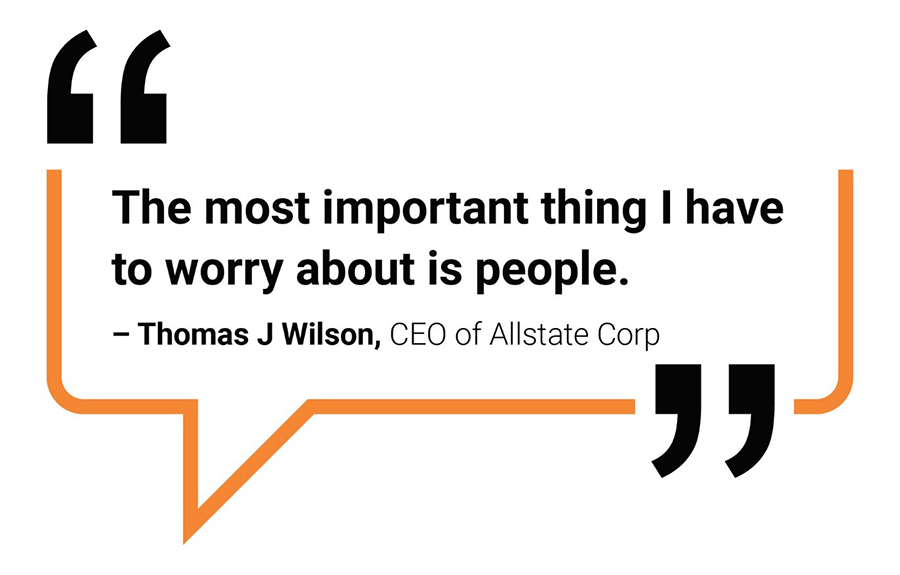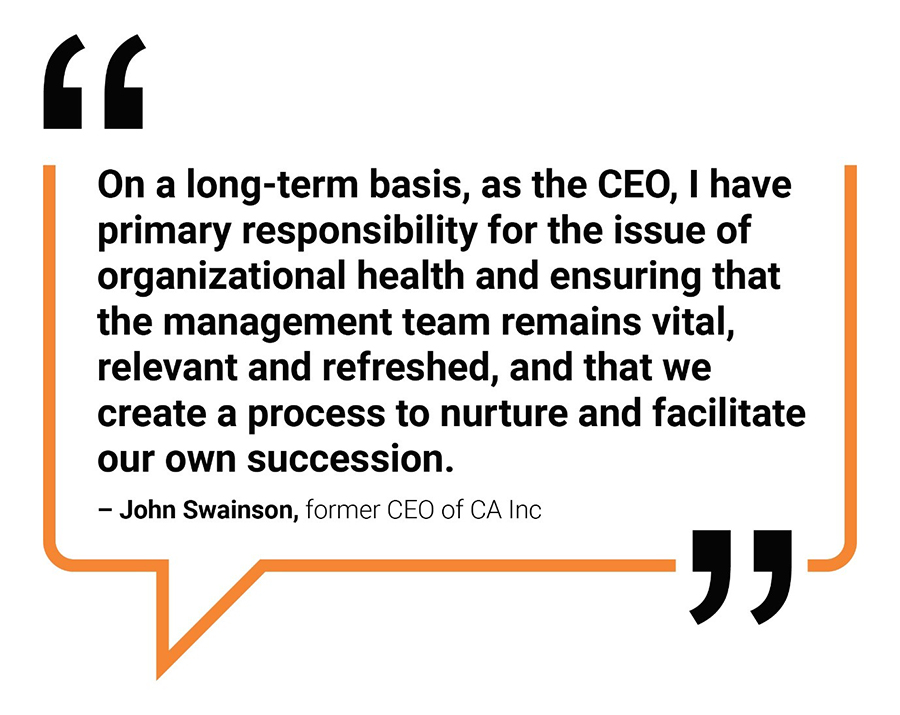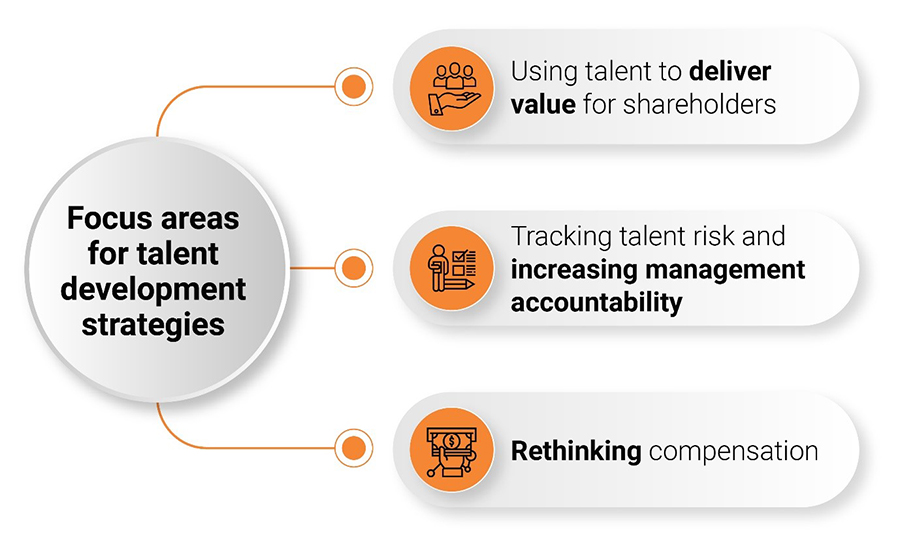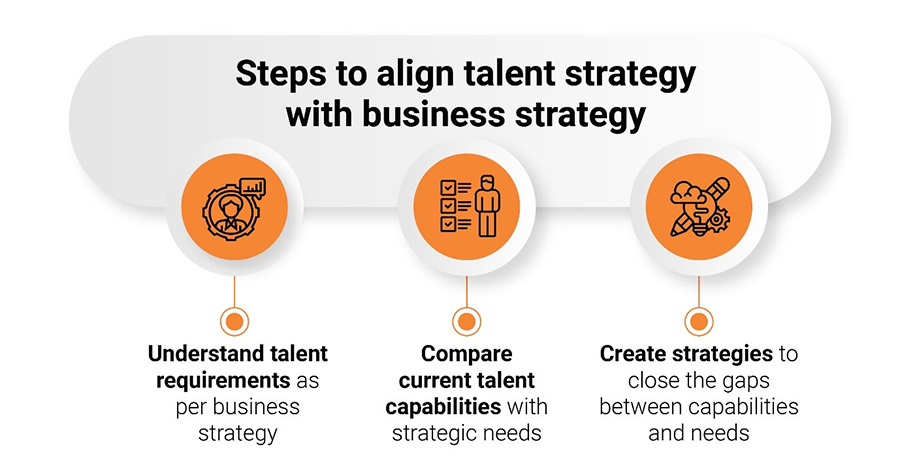It is undeniable that skill is essential for the modern corporation. Aligning people strategies with business plans is crucial if a firm is to succeed. Additionally, this alignment requires continuing calibration in order to reflect ongoing strategic shifts brought on by ongoing disinvestments, digital transformation, M&A, and other events.
Align your talent and company strategy, and you're good to go!
However, how closely do enterprise talent procedures follow the direction of the business? Examples include:

There is obviously a lot to discuss. Additionally, leaders should be involved in developing successful strategies and procedures for people recruiting, onboarding, development, and retention.
Is involving senior leaders really necessary?
Top executives should be involved in the human capital strategy because it is too important to be left to HR alone. According to the findings of a poll conducted by the Economist Intelligence Unit, this is actually taking place:
- 7 out of 20 business executives devote 30 to 50 percent of their time on talent management.
- Seven more of the twenty devote 20% of their time to talent management.
- Up to 15% of the time was devoted to talent management by the others.
The efficacy of an organization's people management plan is driven by executives and business leaders. The tactical execution of talent management procedures is overseen, managed, and owned by the HR staff. If there is no commitment from those at the top, these very procedures are highly likely to be undervalued and thus not implemented very well by managers. This dedication is essential to maintain talent management at the center of corporate strategy so that managers are involved and users accept it. The finest systems and procedures can be discussed and argued for by HR, but the decision-makers must approve their implementation before they can be put into place.
CEOs agree on this point:


Why is there a need for greater executive involvement?
Senior executives seldom participated in personnel management strategies, which was traditionally the purview of HR. But in recent years, this has altered for two reasons:
- A clear change in attention to talent and other intangible assets
- Boards are paying more attention to performance and ethics
Executives now need to plan their own strategy and own the related talent efforts in addition to staying on top of integrated talent strategies at their companies.
Key talent issues need to be addressed by leaders
Managing the relationship between organizational strategy and talent involves a number of critical decisions that top leaders must make:
- Are talent resources being distributed in a way that supports the route the company has decided to take?
- Are the enterprise's personnel management procedures appropriately linked with the goals of the business?
- What steps were made in the preceding year to cultivate talent, and how were they assessed?
- What effects do changing labor and market demographics have on talent and the implementation of strategy, and what risks are involved?
- How effective are external hiring vs. internal promotion, and the onboarding process?
- Who is responsible for engagement, how it is measured, and how is it analyzed?
- What proportion of the turnover is attributable to top performers, high potentials, and key or challenging positions?
It is time for leaders to change how talent management is done
Senior leaders need to be more involved and focused in order to address the aforementioned issues. Focusing on the following themes is necessary to move talent development plans in the proper direction:

- Putting talent to work for the benefit of shareholders: Up to 70% of all business expenses are labor-related, which is pricey! Talent is obviously an asset for growth and development rather than an expense that has to be reduced. For instance, both IT and HR must be involved in implementing a "digital first" approach. An integrated strategic strategy may produce amazing results and leave a lasting impression that helps the company's stockholders as well.
- Monitoring talent risk and raising managerial responsibility: Investigate skill gaps and how they could impact organizational effectiveness. Examine preparedness not just for the C-suite but also for positions that are mission-critical and at least at the management level. Create plans for the development of high-potential personnel and develop and assess skill- and competency-based methods.
- Rethinking compensation is integrating long-term, strategic thinking into pay methods. Establish a balance between short-term and long-term incentives while linking them to organizational objectives and fostering cooperation and teamwork. Align the business objectives and values with the incentive and recognition programs.
What particular actions are available to leaders?
Senior executives in a business must coordinate organizational plans with integrated talent strategies. Not just the CEO or CHRO, but also the executive team, business-line executives, and the board must be involved in this. The acts appear straightforward and straightforward, yet they are unusual in many businesses because they are frequently thwarted by organizational traditions and inclinations.
The three steps to coordinating personnel strategy with company strategy are as follows:

- Analyze the necessary building components, such as performance indicators, organizational culture, talent pools, and others, to better understand the talent requirements as they relate to business strategy. Examine where the firm is in relation to each of these when comparing its business plan, and then rearrange key roles as necessary. You should also identify success-critical abilities and their urgency.
- Compare the strategic needs and present talent capabilities: When comparing the talent baseline to the talent requirements, group jobs and capabilities according to certain skills and qualities. Determine who is excelling, examine the quality of the talent pipeline, and consider the virtues of the culture and the processes for rewards and recognition. Be sure to use accurate data-based evaluation criteria.
- Think of approaches to bridge the capabilities and requirements gaps: Utilizing organizational and individual data, distinguishing between positions that can be filled internally and those that require external hiring. Obtaining foreign talent quickly should be balanced with developing domestic talent. Make the necessary modifications to the important talent management procedures after developing a clear picture of the changes that must be made.
To summarize...
The C-suite has to be actively involved in finding, employing, developing, and retaining the greatest personnel if a company wants its staff to be inspired and motivated to achieve and continuously deliver top performance. Integrated personnel initiatives must be overseen by senior executives, and HR must provide the necessary support and carry them out. If these steps are postponed, the firm's strategy execution can be in grave danger.
Source: tmi.org








